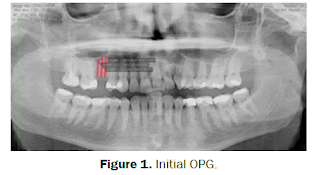Small Diameter Implants (SDIs) in Fixed Restorations:Clinical Cases Considerations During 4 Years Follow-Up
Minimally
invasive dentistry is a reality that in the last several years has involved all
branches of dentistry. In implantology these minimally invasive techniques have
revolutionized the standard treatments and are showing a high possibility of
increased practice. Some examples applied in implantology include digitalradiology, CT reconstructions, and their evolution with maximum reduction of radiation
dose – CBCT Cone Beam to cite an example - and the software for
three-dimensional reconstructions (advocated by Ganz already in 1995).
The
digital dentistry has and is continuing to contribute
The numerous advantages
of the flapless surgery in implantology are well highlighted in the literature
and are not just about minimizing surgical trauma but also achieving a fast
healing process and good tissue response in the early stages of
Osseointegration. Strict guidelines are present in the literature about
the directions of the flapless technique, and they have been proven to be highly
functional in surgeries along with the use of software with the application of
surgical guides. The flapless procedure was applied with successful
results on reduced diameter implants and was not only established to be safe
but also decreases gingival healing period when combined with immediate loading.Read more....




Comments
Post a Comment